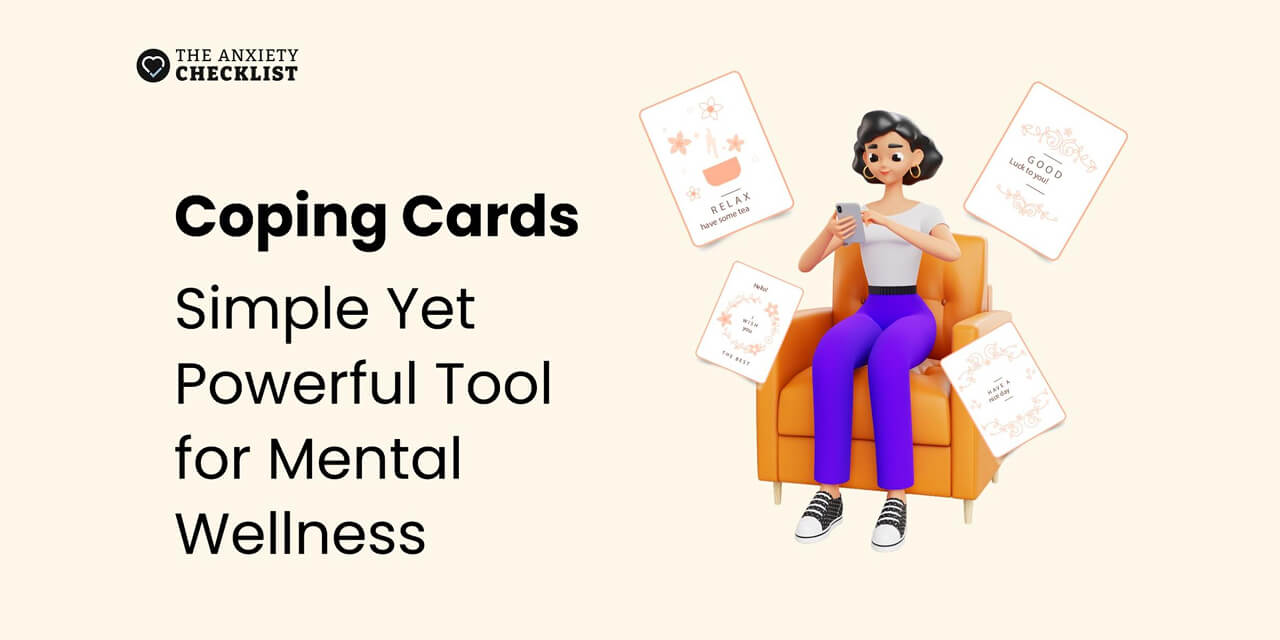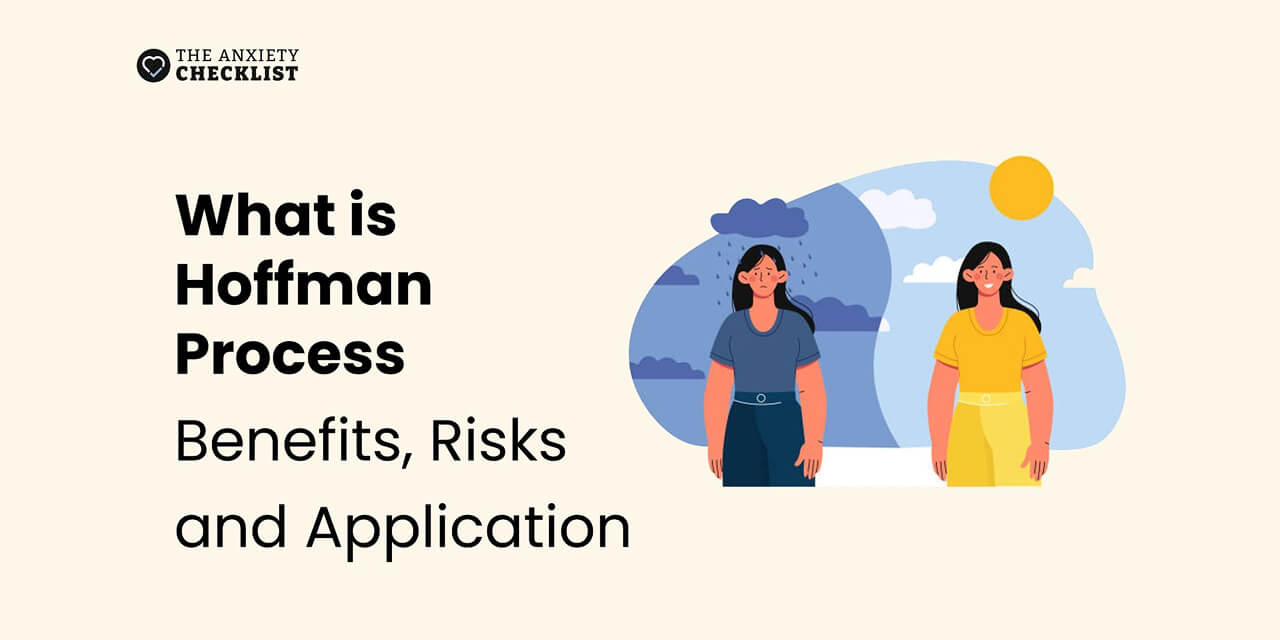What Are Coping Cards?
Coping cards are simple yet powerful mental health tools used to manage distressing thoughts, emotions, or behaviors.
Rooted in therapeutic approaches like Cognitive Behavioral Therapy (CBT) and Dialectical Behavior Therapy (DBT), they provide short, actionable reminders. It’s with these reminders that they help ground a person during moments of emotional overwhelm.
Typically, coping cards are small, physical notes like index cards, sticky notes, and wallet-sized printouts, or digital versions stored in apps or phone notes. Some people prefer laminated cards for durability.
They feature personalized messages and designs that reflect calming strategies, helpful truths, or behavioral cues tailored to an individual’s struggles. The idea is to externalize coping strategies so they’re available when internal resources feel inaccessible.
Here are the key characteristics of effective coping cards.
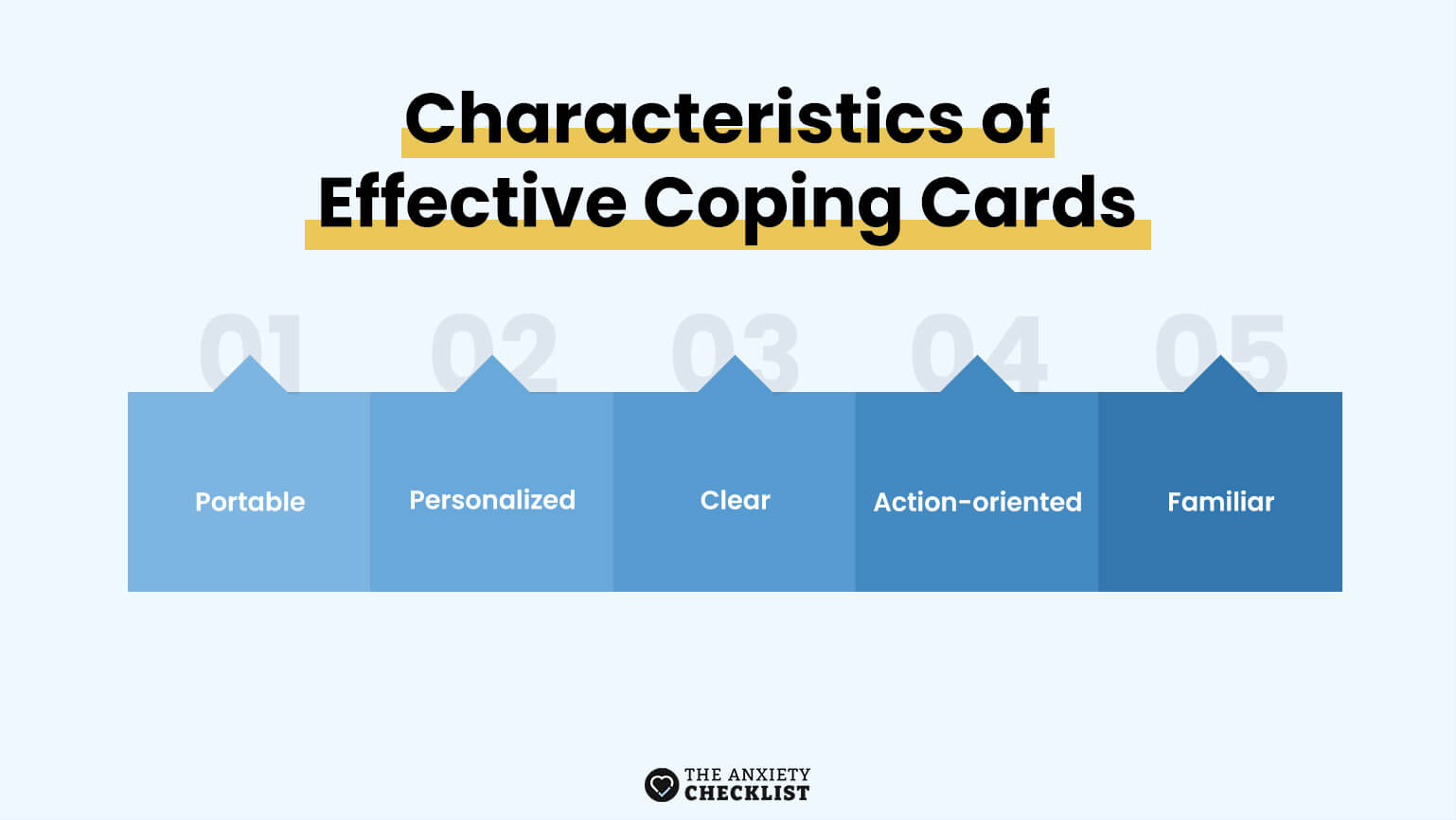
It’s important to distinguish coping cards from affirmations or mantras.
While affirmations are aspirational, focusing on general positivity (“I am worthy,” “I attract success”), coping cards are situational and directive. For example: “I can take two deep breaths right now.”
And unlike mantras, which are often repeated as part of meditation or mindfulness practice, coping cards are micro-interventions. You can use them reactively or preventively to interrupt unhelpful patterns and promote stability.
The best part? Coping cards work well alone or with other mental health strategies. They can include breathing techniques, grounding exercises, or emergency contacts.
This flexibility makes them valuable as both standalone tools and supportive elements in broader mental health care.
Indeed, coping cards aren’t just inspirational quotes. They’re personalized reminders of what works — grounded in evidence, experience, and your unique emotional needs.
How Coping Cards Support Mental Health
Coping cards work because they speak to the mind at the exact moment it needs help.
Whether you’re caught in a spiral or feeling out of control, these tools help bring your focus back to safety. They don’t just sound good; they reflect powerful psychological techniques backed by science and therapy.
The Psychology Behind Coping Cards
Coping cards work because they engage several essential mental health processes. We’ll look at three: Grounding, self-regulation, and cognitive reframing.
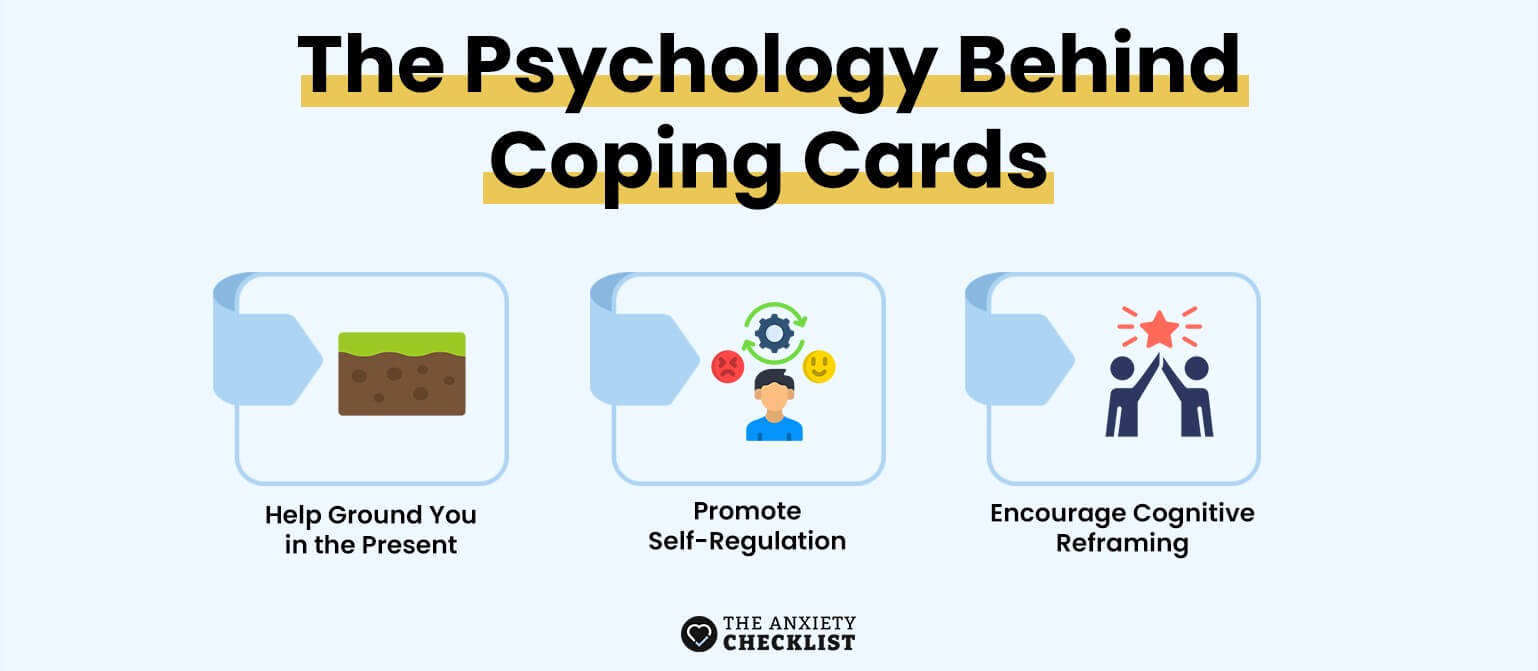
They Help Ground You in the Present
When emotions feel too much or thoughts start to spiral, your nervous system can go into overdrive. Your mind races to future worries, and you end up having to deal with panic, dissociation, or mental fog.
Coping cards bring your attention back to something steady and known, reminding you that you’re safe. By focusing on a familiar phrase, action step, or reminder, you can interrupt the chaos and return to the present moment.
Many people use coping cards for anxiety during panic attacks to feel more in control.
They Support Self-Regulation
Self-regulation is your ability to manage emotional responses. In tough moments, it can feel almost impossible to calm down without help. That’s where coping cards come in.
They serve as external cues that prompt healthier responses. You’re not left trying to remember what worked last time — you’ve got a written reminder right in front of you.
By providing structure when your thoughts feel chaotic, coping cards reduce emotional intensity and help you regain control more quickly.
They Encourage Cognitive Reframing
Cognitive reframing is a technique that’s a part of Cognitive Behavioral Therapy (CBT). It means changing how you think about a situation, so it feels less overwhelming.
Coping cards do this by helping you challenge unhelpful thoughts and replace them with more balanced ones. For example, instead of thinking:
This subtle shift can ease the intensity of negative emotions and help you think more clearly.
Science-Backed Benefits of Coping Cards
Research and clinical experience both support the use of tools like coping skills cards in therapy and daily life. Studies show they provide measurable improvements in several areas, such as:
Types of Coping Cards
Coping cards can be tailored to fit your needs, mood, or situation.
The best part? There’s no one-size-fits-all approach.
You can mix and match styles, or even create a set of different types. Below are some of the most helpful categories to explore.
Affirmation-Based Coping Cards
These are the most well-known type of coping cards. They offer supportive, encouraging statements that boost your confidence and self-worth. Think of them as gentle reminders that you’re doing okay, even when life feels hard.
Examples:
Affirmation cards use optimistic but personal language. They’re especially helpful for depression and low self-esteem issues, helping build inner strength over time.
CBT-Based Coping Cards
These cards are rooted in Cognitive Behavioral Therapy. They help you challenge distorted thoughts and replace them with healthier ones.
This type of card can guide you through cognitive reframing when you’re stuck in a negative loop.
Examples:
CBT coping skills cards often include triggers and responses to guide healthier thought patterns. They’re excellent for depression, panic, perfectionism, and anxiety disorders.
Crisis Coping Cards
Used during panic attacks, intense stress, or emotional breakdowns, crisis cards offer immediate reassurance. They include short, clear messages that bring you back to safety and stability. These are often part of safety plans created with a therapist.
Examples:
Crisis cards contain emergency contact numbers and crisis hotlines for mental health emergencies. They’re essential for those dealing with panic, PTSD, or suicidal thoughts.
Emotion Regulation Cards
These coping cards help you identify and manage or navigate intense emotions. They suggest ways to manage feelings without suppression, and include feeling words and emotional scales.
Examples:
The goal is not to suppress your feelings, but to respond in a way that’s thoughtful and safe. Emotion regulation cards are valuable for people learning to handle intense emotional swings.
Grounding Technique Cards
Grounding cards use sensory techniques to bring you back to the present moment quickly. They help calm the body and mind by pulling you out of overthinking and racing thoughts, and reconnecting you with your environment.
Examples:
Grounding technique cards work well during anxiety spikes or dissociation. Here are some situations where grounding can be helpful:
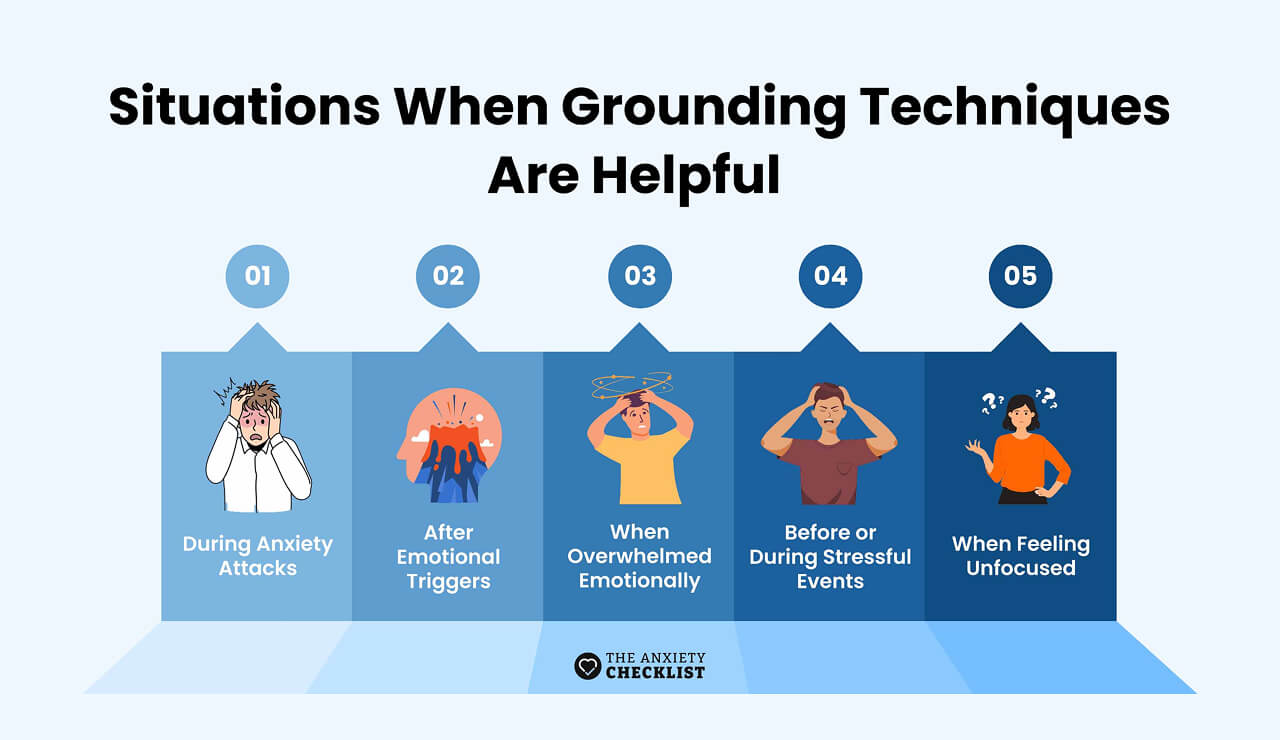
Instructional/Action Cards
Action cards provide step-by-step instructions for specific situations. They’re often task-oriented, and break down complex coping skills and strategies into simple, practical steps that are easy to follow.
Examples:
These coping cards bridge the gap between awareness and action, offering straightforward guidance. They make things easier for you by telling you exactly what to do next.
Values or Goal-Oriented Cards
These coping cards anchor behavior in personal values. They help keep the bigger picture in view by reminding you of your long-term intentions and what matters most to you during tough moments.
Examples:
Values-based coping cards build motivation and long-term clarity. They’re especially useful for building self-discipline and boundaries, and addiction recovery.
Therapist-Suggested Cards
These are custom coping cards, often made during therapy sessions, guided by a mental health professional. Your therapist might help you choose phrases, calming strategies, or reminders that suit your goals.
Example:
Therapist-suggested cards reflect therapeutic goals, mental health echniques and exercises, and personal insights. They often evolve through sessions and serve as a bridge between therapy and daily life.
Examples of Coping Cards
Coping cards work best when they feel personal and relevant. For better outcomes, write them in your voice. Use these samples as inspiration for creating your own personalized cards.
Anxiety or Panic Attacks
Depression, Low Mood, or Hopelessness
Work and Academic Stress
Relationship Conflict
Crisis and Emergencies
How to Create Your Own Coping Cards
Creating your own coping cards is a powerful way to take control of your mental well-being. When the words come from you, they tend to stick better and feel more real when you need them most.
Here’s a step-by-step guide to making coping cards that work for your unique needs.
Step 1: Choose Your Format
You can make coping cards with just a pen and paper, or go digital. Use whatever format feels most natural and accessible to you:
You could also use a hybrid approach, where you create physical cards and photograph them. This gives you backup copies and allows sharing with your therapist, if needed. Just make sure whatever format you choose is something you’ll actually use.
Step 2: Select a Focus Area
Start by thinking about what kind of support you need. This could include situations that regularly challenge your mental health, whether it’s social anxiety, intrusive thoughts, or motivation lapses. Identify the emotions or patterns you’d like support with by asking:
Your focus might be on anxiety, low mood, panic attacks, emotional regulation, or even just staying present.
Step 3: Use Calming Language
Write in your natural voice, not formal therapeutic language. Use words and a tone that feel familiar and comfortable to you. Also, keep your messages short, clear, kind, and gentle.
Sentences that are under 15 words are ideal as they make for quick reading in stressful situations. While writing, use “I” statements or second-person addressing yourself: “I can handle this.” Other tips include:
Steer clear of negative words when possible. Instead of “Don’t panic,” try “Stay calm and breathe slowly.” Additionally, include specific actions rather than vague encouragement. "Take three deep breaths" works better than "relax."
Here is a breathing technique that can help you stay calm:
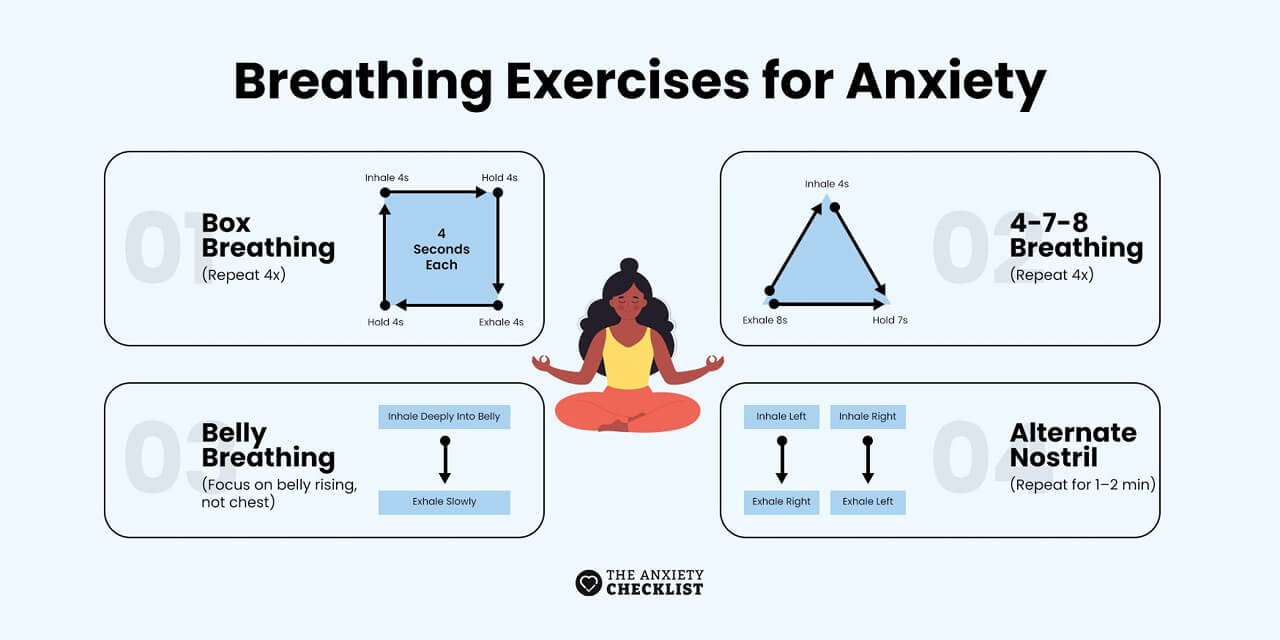
Step 4: Design for Calm and Clarity
Visuals matter. Whether your coping cards are written or digital, you want to make them visually appealing and calming.
Use colors that comfort you — for instance, blues and greens can often feel soothing. Additionally:
Remember, cramped coping cards feel overwhelming during crises. Ensure yours leverage visual cues to help reinforce calm and be more inviting to use.
Step 5: Test and Refine
Try your coping cards during calm moments first. Read them aloud to check flow and clarity. Also try them out in real-life moments to see what feels helpful and what doesn’t. Do they actually help? Or do some feel too generic?
You can:
If you’re in therapy, ask your therapist to review your coping cards. They can offer insights, tailor statements to your goals, or suggest improvements or new gratitude prompts based on your sessions.
Step 6: Ensure Accessibility
Keep your coping cards somewhere that’s easy to reach. This could be:
Create multiple copies so you’re never without support. The goal is to make your coping skills cards as accessible as possible. That way, they’re right there with you when it matters.
When and Where to Use Coping Cards
Coping cards are versatile tools that can be used anywhere you feel stress or need help reframing your perspective. They’re most effective during moments of emotional intensity or when you feel your usual coping strategies failing.
Therefore, you want to apply them at the first sign of anxiety, depression, or overwhelming stress. While coping cards are most effective before emotions peak, they can still help during acute episodes. You can use them:
Frequently Asked Questions
Keep Support Within Reach
Previous Article
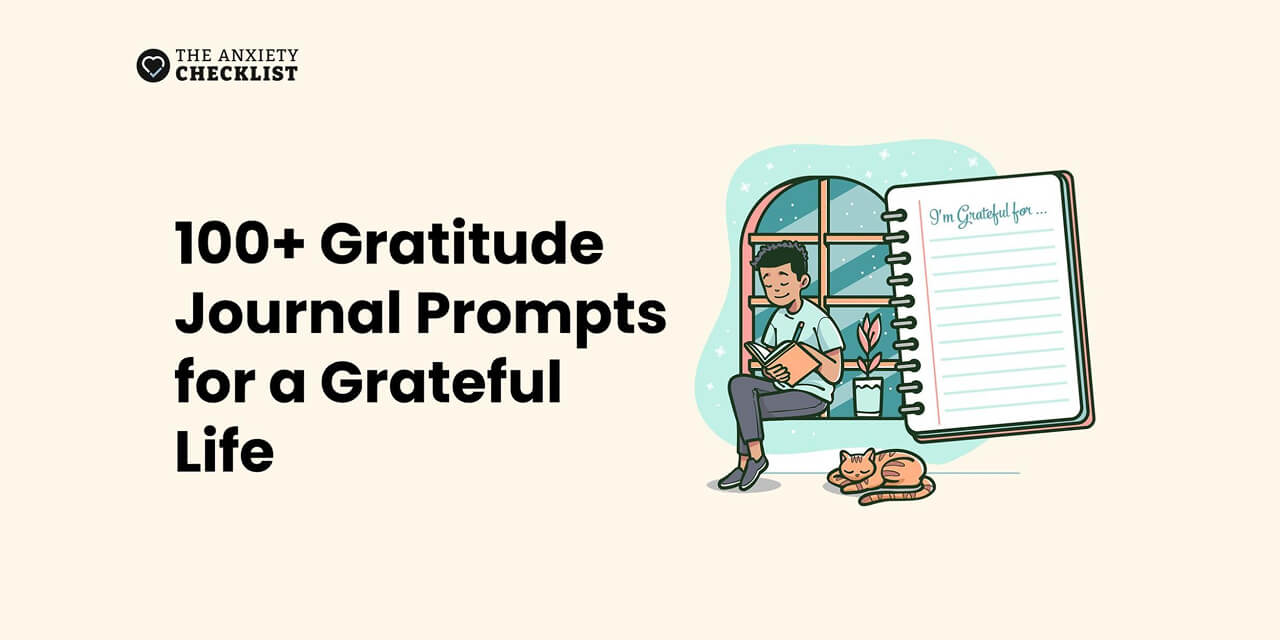
100+ Gratitude Journal Prompts for a Grateful Life

Advertisement
BetterHelp
BetterHelp makes starting therapy easy. Get a tailored therapist match based on your needs and preferences - in as little as 24 hours!
Enjoy 20% off your first month with code "anxietycheck"

4 million+ Helped
Access Therapy 24/7
Preferred by 94% of users
If you are in a crisis or any other person may be in danger - don't use this site. These resources can provide you with immediate help.


